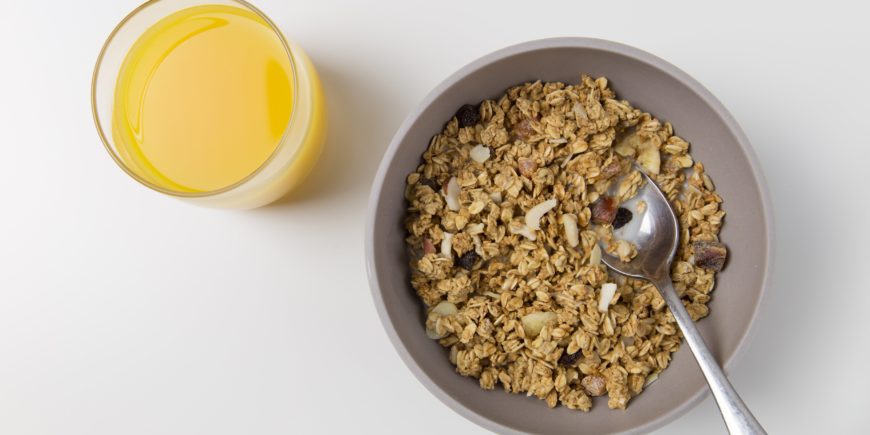In the realm of sports nutrition, various factors contribute to optimal performance and overall well-being. One essential but often overlooked component is dietary fiber. Fiber plays a significant role in supporting digestive health, maintaining stable energy levels, and promoting overall wellness. In this article, we will explore what fiber is, where to find it, the recommended daily intake, the pros and cons, and how it is applicable to sports nutrition.
Understanding Fiber
Fiber is a type of carbohydrate found in plant-based foods that the body cannot fully digest or absorb. Unlike other carbohydrates, fiber passes through the digestive system relatively intact, providing a range of health benefits. There are two main types of fiber: soluble and insoluble.
- Soluble Fiber: This type of fiber dissolves in water and forms a gel-like substance in the digestive tract. Soluble fiber is known for its ability to lower cholesterol levels and stabilize blood sugar levels. It is found in foods such as oats, legumes, fruits (such as apples and oranges), and vegetables (such as carrots and Brussels sprouts).
- Insoluble Fiber: Insoluble fiber does not dissolve in water and adds bulk to the stool, aiding in regular bowel movements and preventing constipation. It is commonly found in whole grains, nuts, seeds, and the skins of fruits and vegetables.
Sources of Fiber
A fiber-rich diet can be achieved by incorporating a variety of plant-based foods into your meals. Here are some excellent sources of dietary fiber:
- Whole Grains: Opt for whole grain bread, brown rice, quinoa, whole wheat pasta, and oatmeal to increase your fiber intake.
- Fruits and Vegetables: Include a variety of fruits and vegetables in your diet, such as berries, oranges, bananas, apples, broccoli, spinach, kale, and legumes like lentils and beans.
- Nuts and Seeds: Almonds, walnuts, chia seeds, flaxseeds, and sunflower seeds are all good sources of fiber and healthy fats.
- Legumes: Incorporate lentils, chickpeas, black beans, and other legumes into your meals to boost fiber content.
Recommended Daily Intake
The daily recommended intake of fiber varies depending on factors such as age, sex, and overall health. In general, the Academy of Nutrition and Dietetics suggests the following daily fiber intake:
- Men (aged 19-50): 38 grams
- Women (aged 19-50): 25 grams
- Men (over 50): 30 grams
- Women (over 50): 21 grams
It is important to note that athletes and individuals engaged in intense physical activity may need higher amounts of fiber to support their increased energy expenditure.
Pros and Cons of Fiber
Pros:
- Digestive Health: Fiber promotes regular bowel movements, prevents constipation, and maintains a healthy digestive system.
- Blood Sugar Control: Soluble fiber slows down the absorption of sugar, helping to keep blood sugar levels stable.
- Heart Health: High-fiber diets have been associated with a reduced risk of heart disease, as fiber helps lower cholesterol levels and blood pressure.
- Weight Management: Fiber-rich foods are generally low in calories, promote feelings of fullness, and can aid in weight management by reducing overeating.
Cons:
- Excessive Intake: Consuming a significantly high amount of fiber without sufficient fluid intake can lead to bloating, gas, diarrhea, or constipation. It is important to gradually increase fiber intake and drink plenty of water.
- Interference with Nutrient Absorption: High-fiber diets may interfere with the absorption of certain minerals like iron, zinc, and calcium. However, this is typically not a concern for individuals with a balanced diet.
Applicability to Sports Nutrition
Fiber plays a vital role in sports nutrition, benefiting athletes in several ways:
- Digestive Health: A healthy digestive system is crucial for optimal nutrient absorption and overall well-being. Adequate fiber intake helps prevent digestive issues that can hinder performance, such as bloating, cramping, and irregular bowel movements.
- Sustained Energy Levels: Fiber-rich foods, particularly those with soluble fiber, are digested more slowly, providing a sustained release of energy. This can help stabilize blood sugar levels and prevent energy crashes during prolonged workouts or competitions.
- Weight Management: Maintaining a healthy body weight is important for athletes. High-fiber foods are generally low in calories, promote satiety, and can aid in weight management goals by reducing excessive calorie intake.
- Heart Health: Engaging in intense physical activity places stress on the cardiovascular system. Consuming an adequate amount of fiber can help maintain heart health by reducing cholesterol levels and blood pressure, thus lowering the risk of cardiovascular diseases.
Examples of High Fiber Meals and Snacks
- Breakfast:
- Overnight oats with chia seeds, topped with berries and a sprinkle of nuts.
- Whole grain toast with avocado and sliced tomatoes.
- Vegetable omelet with spinach, bell peppers, and mushrooms.
- Lunch:
- Quinoa salad with mixed vegetables, chickpeas, and a lemon-tahini dressing.
- Whole grain wrap with grilled chicken or tofu, mixed greens, and hummus.
- Lentil soup with a side of whole grain bread.
- Dinner:
- Grilled salmon or tofu with roasted vegetables (such as broccoli, cauliflower, and sweet potatoes) and quinoa.
- Stir-fried vegetables (like bell peppers, snap peas, and carrots) with brown rice and lean protein (chicken, shrimp, or tofu).
- Whole wheat pasta with tomato sauce, grilled vegetables, and lean ground turkey.
- Snacks:
- Apple slices with almond butter.
- Greek yogurt topped with mixed berries and a sprinkle of granola.
- Raw vegetables (carrot sticks, cucumber slices, bell pepper strips) with hummus.
- Pre-Workout Snacks:
- Banana with a small handful of almonds or walnuts.
- Whole grain crackers with cottage cheese or Greek yogurt.
- Energy balls made with dates, oats, and nuts.
Remember to choose whole grain options whenever possible, incorporate plenty of fruits and vegetables, and include lean sources of protein to support muscle recovery and growth. These examples provide a good balance of macronutrients while delivering a healthy dose of fiber to support the digestive system and sustained energy levels during workouts or competitions.
Fiber is an essential component of a healthy diet, and its role in sports nutrition should not be overlooked. Incorporating fiber-rich foods into your daily meals can support digestive health, stabilize energy levels, promote heart health, and aid in weight management. Whole grains, fruits, vegetables, nuts, seeds, and legumes are excellent sources of fiber. It is important to consume the recommended daily intake of fiber based on individual needs and gradually increase fiber intake to avoid digestive discomfort. Athletes can benefit from fiber’s contribution to digestive health, sustained energy levels, weight management, and heart health. By incorporating fiber-rich foods into their diets, athletes can optimize their performance and overall well-being. Remember to stay hydrated to support proper fiber digestion. Consult with a healthcare professional or registered dietitian for personalized dietary guidance in relation to your specific needs and goals.
Need some help with your fitness and nutrition? Alpha Expat can help you reach your fitness and nutrition goals with unique solutions. Reach out to us and get to ball rolling or click on the WhatsApp button in the lower right corner.



